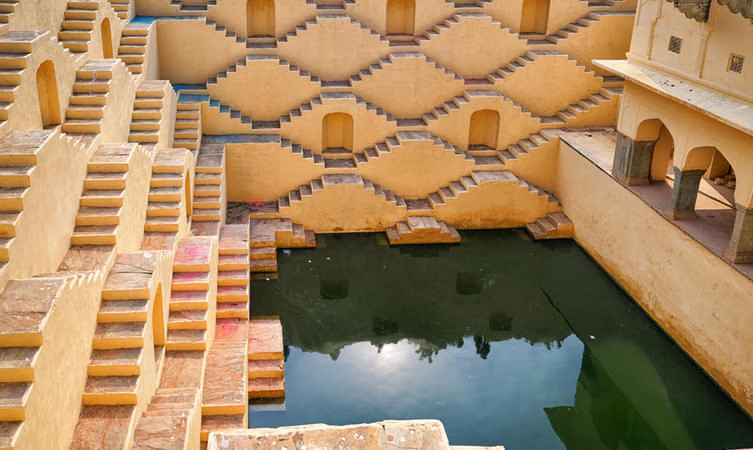Panna Meena ka Kund: A Hidden Gem of Jaipur
Nestled in the ancient city of Amer, just a few kilometers from Jaipur, Rajasthan, lies a fascinating stepwell known as Panna Meena ka Kund. Often overshadowed by the grandeur of nearby Amer Fort, this 16th-century structure is a captivating example of the architectural brilliance and water conservation techniques of the past. With its intricate symmetrical steps and serene atmosphere, Panna Meena ka Kund is not just an architectural wonder but a glimpse into Rajasthan’s sustainable heritage.
Historical Significance
Panna Meena ka Kund is believed to have been constructed during the reign of Maharaja Jai Singh in the 16th century. It is named after a local Brahmin, Panna Meena, who was either the builder or a key administrator of the project. Stepwells like this were built throughout Rajasthan to serve a dual purpose: providing water storage and a place for locals to gather and escape the heat. They played a crucial role in surviving the arid climate of the region, and this kund was no exception.
Though not as ornate as some of India’s grander stepwells, Panna Meena ka Kund is admired for its precise geometry. The eight-story stepwell features symmetrically arranged steps on three sides leading down to a pool of green water. The steps form a zigzag pattern, creating a mesmerizing illusion and offering a unique visual treat for photographers and architecture enthusiasts alike.
Architectural Beauty
The kund showcases the typical Rajasthani stepwell design, with steep staircases descending to the water. The steps are designed in such a way that one can climb down from one side but cannot easily retrace the same path, making it a marvel of engineering logic. At the top of the kund is a small pavilion that once served as a resting spot for travelers and locals. The yellow sandstone used in its construction adds to its warm, earthy aesthetic.
One of the most intriguing features of this stepwell is how it remains cool even in peak summer, making it a perfect place to sit and relax. The design was not only functional for water conservation but also environmentally responsive.
Cultural Relevance
Stepwells like Panna Meena ka Kund were social spaces. Women came here to collect water, share stories, and find respite from the sun. The kund was not just a utilitarian structure but an integral part of community life.
Today, the kund is no longer in use for water storage but has become a peaceful site for tourists. Unlike other crowded attractions in Jaipur, it offers a quiet, offbeat experience. Local legends still surround the kund, adding to its mystique, including one that warns visitors against using the same path to ascend that they used to descend.
Visiting Panna Meena ka Kund
The stepwell is located near the Anokhi Museum and Amer Fort, making it a convenient stop during a visit to Jaipur. There’s no entry fee, and the site is open throughout the day. Early morning or late afternoon are the best times to visit to avoid the heat and capture beautiful photographs in natural light.
Whether you’re a history lover, a photography enthusiast, or a traveler seeking something different, Panna Meena ka Kund is a must-visit spot in Jaipur. Its blend of simplicity, history, and architectural precision makes it one of the city’s most underrated treasures.
